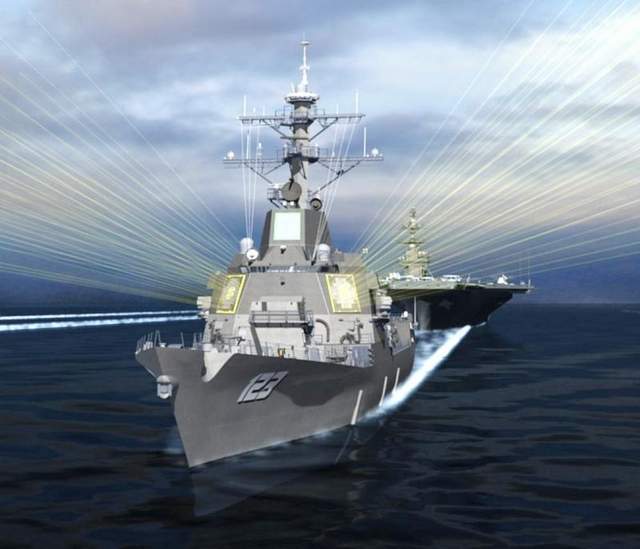
Raytheon announced on Wednesday that it has completed a preliminary design review (PDR) for the Air and Missile Defense Radar (AMDR) that will be fitted onto the Flight III Arleigh Burke-class guided missile destroyers.
At the same time, the company announced that it has also completed the Integrated Baseline Review for the system. With the PDR completed, Raytheon will embark on what is called the engineering and manufacturing development (EMD) phase of the program.
“With the technology risks retired in the earlier technology development phase and cost reduction initiatives already implemented, we’re now fully focused on the fabrication of the AMDR system and completion of the engineering and manufacturing development phase,” said Kevin Peppe, vice president of Raytheon’s seapower capability systems business area in a release.
Once development of the AMDR radar is completed, it will be fitted on to the second Burke-class destroyer built in fiscal year 2016. The 14-foot AMDR radar, which will fit into the ship’s deckhouse in much the same ways at the current SPY-1D radar, is expected to be revolutionary in many ways.
Constructed as an active electronically scanned array radar using Gallium Nitride-based transmit/receive modules, the Navy expects the system to be 30 times more power than the SPY-1 for about twice the electrical power input. It is Gallium Nitride technology that is enabling Raytheon to build the Flight III with the AMDR without straining the power and cooling capacity of the Burke-class hull.
The AMDR’s active electronically scanned array design will also enable digital beam forming, leading to a much more precise tracking. Further, the system could potentially be used to perform electronic attacks—a capability not found on any current Navy warship.
One advantage of the AMDR is that it is a scalable design that could be adapted for other vessels. The system is modular and groups of transmit/receive modules can be grouped together to form a radar for whatever application—either a smaller or larger vessel. However, at present, the Navy has no plans to fit the AMDR onto another type of warship.





